Yamaha Looks Toward the Future in the Guitar Industry
Yamaha is so much more than keyboards and motorcycles. In fact, they make some of the most accessible guitars used by a few of our favorite musicians.
One of the most significant elements about Yamaha is their desire to push forward rather than rehash what’s already been done. “Yamaha isn’t reliant on nostalgia,” says LG of Thelma and the Sleaze, and player of the Yamaha Pacifica. “They want to keep pushing boundaries and trying things out.” And this is also true in their designs, customer service, and image—rather than uphold the tired portrait of rock gods and goddesses, they aim to showcase a genre-bending lineup of musicians to inspire novices and long-time shredders alike.
Let’s be honest—when Yamaha comes to mind, most of us think of keys or motorcycles. But have you ever wondered why one of the biggest manufacturers of pianos started making guitars in the first place? Yamaha’s history traces back to 1887 with founder Torakusu Yamaha, a pioneer in the production of Western musical instruments in Japan. Yamaha mostly focused on organs and pianos until the early 1940s, when they started building guitars. After such success with piano production, the company decided to manufacture a variety of instruments to provide more musical opportunities to their customers. This shift came before rock music became widely popular, and eventually Yamaha opened a guitar factory later that decade.
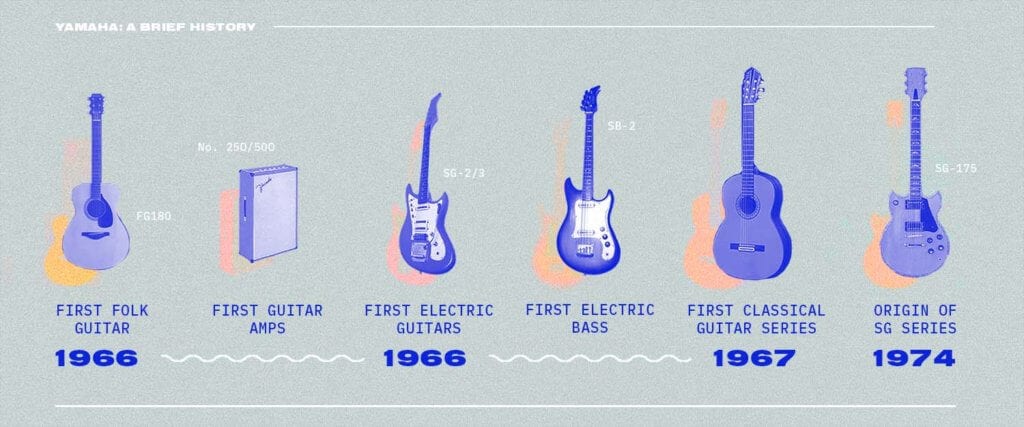
Fast forward to the 1960s when Beatlemania exploded, resulting in an increased demand for guitars that retailers couldn’t keep up with, especially in the United States. At this time, Yamaha already had 20 years of guitar building under their belt, and began exporting guitars outside of Japan, setting out on the path to becoming the largest instrument manufacturer in the world.
Over the years their lineup grew to cater to all kinds of guitarists, covering everything from the pretty ordinary to the frankly absurd, but a few things stand out in particular:
- In the 1980s, Yamaha introduced the APX electro-acoustic guitars, with smaller, thinner bodies, more comfortable electric guitar style necks, and onboard pickups. APXs were designed especially for guitarists taking to the stage and are still one of the world’s best-selling electro-acoustic guitars.
- In the 1990s, with the introduction of the Pacifica series (originally a high-end guitar developed for LA session players), Yamaha revolutionized what guitarists could get on a budget with the Pacifica 112. At a price where most brands still used plywood bodies, pickups that squealed, and tremolos that didn’t stay in tune, the Pacifica 112 was a genuinely stage ready guitar.
- In 2015, the most recent addition to the Yamaha lineup was the Revstar range, with which they took design cues from the contemporary café racer motorbikes of the 1960s, as well as celebrating the Japanese roots and philosophy of the brand. The development for Revstar took a different approach to conventional guitar design, bringing together a unique combination of players, industry experts, and industrial designers specializing in fields as diverse as aircraft, furniture, and hotel design to drive an outside-in perspective.
So, what makes today’s Yamaha guitars reliable? And why should we care?
She Shreds spoke with four groundbreaking artists on the Yamaha roster to truly understand how a company, who celebrated its 50th anniversary in 2016, keeps moving forward in the guitar industry—not only through craftsmanship, but also accessibility, playability, and artist relations.
LG of Thelma and the Sleaze, Yamaha Pacifica PAC311H Electric Guitar
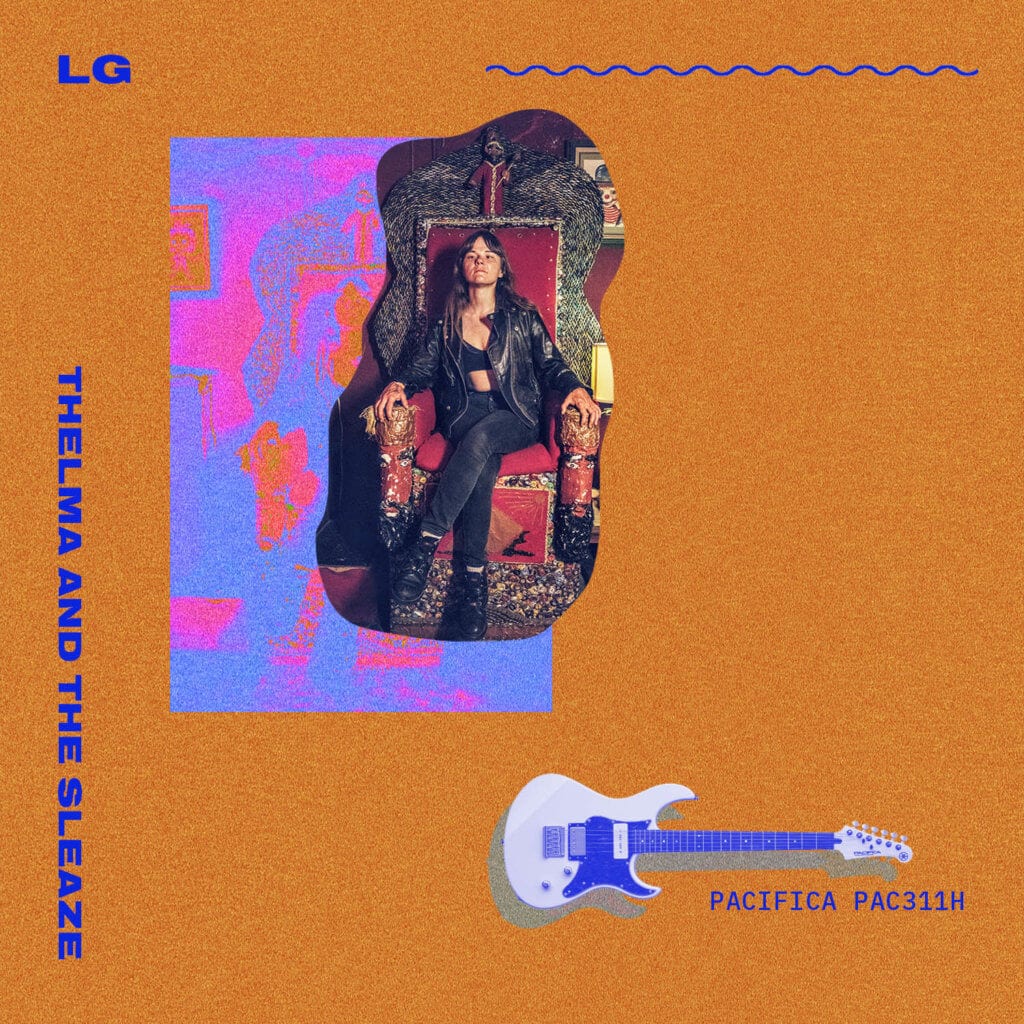
When it comes to a guitar to take on tour, LG looks for an affordable, quality instrument: “At the end of the day, I need a guitar that is versatile, because my band plays with a lot of dynamics and different genres. But also, it’s gotta look good, and able to be thrown in a van. It’s gotta be about quality—I don’t want to align myself with a company that isn’t worth people’s money.”
LG often plays a Yamaha Pacific PAC311H electric guitar, and took it with her on a couple of tours with Thelma and the Sleaze. “The P-90 and humbucker are sick,” she says. She also loves that the Pacifica is the perfect weight for her, and that it’s only gotten better with age over the two years she’s been playing it. Aesthetically, she really likes the natural finish and the tortoise-style pickguard. “Everyone who talked to me after our shows was like, “What is that?” And I was like, ‘It’s the Yamaha Pacific. You can literally get one for 300 dollars.’”
She adds that when she was a little girl, she didn’t see herself reflected in guitar media: “I was a little girl once, reading guitar magazines or looking at guitar ads—I have a lazy eye, I was poor. There are kids out there who don’t look like models, who aren’t pretty, and they don’t want to be. They need to see women they can aspire to be like.”
So, when LG was featured in a Yamaha guitar ad, it blew her mind: “Yeah, you don’t think I should be in a guitar ad, but that’s why they put me in there. And that’s amazing. There are a lot of people with lazy eyes, and it’s silly to say, but I’m a good representation of what you can do with that lazy eye.”
Check out Thelma and the Sleaze’s new album, Fuck, Marry, Kill, as well as our feature on LG, “Reeking of Sex and Empowerment with LG of Thelma and the Sleaze.”
Laura Jane Grace of Against Me! and The Devouring Mothers, Yamaha CSF3M
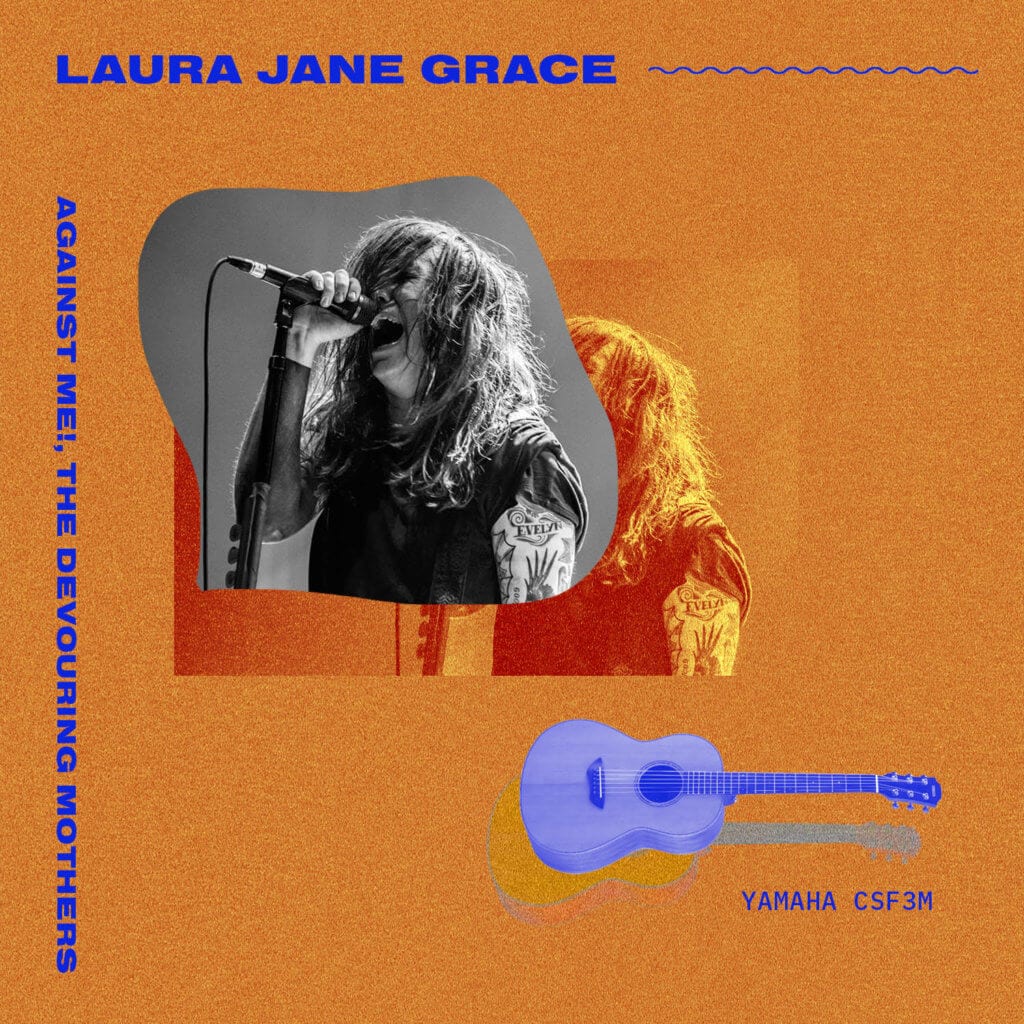
Laura Jane Grace is no stranger to the touring life, so she knows exactly what she needs while traveling internationally. When she went on an overseas Against Me! tour in 2019, she was restricted in what gear she could bring on the plane, so she went looking for an acoustic-electric guitar that could fit in an overhead compartment. Grace needed something that would be easy to grab, bring in the hotel, and have in the van—but that also sounded good both when played unplugged and through a DI. She reached out to Yamaha, and they suggested the Yamaha CSF3M, a parlor-sized acoustic-electric guitar.
“Sometimes it’s really easy with an acoustic guitar, played through a PA, to feel like you’re playing a ukulele. You know, that sound you get back—this thin, boring acoustic sound,” says Grace. “Finding a guitar that’s the best of both worlds is hard to do.”
The CSF3M has become Grace’s go-to acoustic guitar with both of her bands, using it on solo and full-band songs: “Playing it live or alone in my room, I just really love it. There’s something about smaller-bodied acoustic guitars.”
Check out the 2018 debut album from Laura Jane Grace and the Devouring Mothers, Born to Rot, and our cover story with her in She Shreds Issue #9.
Dre Babinski of Steady Holiday, Revstar RSP20

It’s all about playability when it comes to the guitars Dre Babinski plays. The singer-songwriter aka Steady Holiday needs a smaller-bodied electric that’s easy to play, and light enough to wear for an extended period of time. In March, Babinski connected with Yamaha at SXSW, when they approached her about playing their showcase with one of their guitars. “I had a few conversations with a rep, and told him what I was looking for and tried a few styles,” she says. “I really connected with the Revstar.”
On the lighter side, the Revstar makes it more comfortable for Babinski to play through an entire set. She also appreciates the size: “It has a narrow and thin neck, so it’s easy for me to get around the instrument, which is something I struggle with—I’m a pretty small person.”
Babinski claims that she’s still very much in her formative years of songwriting, and usually only sees opportunities like the one with Yamaha offered to artists further along in their careers. “I’m not a shredding guitar player, I feel like a novice in some ways,” she says. “But this is the stage of an artist’s career when they need the most support, when they literally need a guitar. With Yamaha, it’s more about what worlds people are building, and what they want to get behind.”
Listen to Steady Holiday’s 2019 cover of Weezer’s “Holiday.”
Gabriela Quintero of Rodrigo y Gabriela, NCX Custom

Gabriela Quintero, rhythm guitarist in the Mexican acoustic guitar duo Rodrigo y Gabriela, has a lot of acclaim. The band has released five studio albums, three live albums, and one EP; they’ve contributed to major motion picture soundtracks; they’ve toured internationally and even performed at The White House for President Barack Obama; and they were recently nominated for a 2020 Grammy for Best Contemporary Instrumental Album for their 2019 album, Mettavolution.
So, they’re well on their way to legendary status.
As a rhythm guitarist with percussive duties, Quintero often worries about her live levels and quality of sound. “We play very high energy gigs,” she says. “People are clapping and standing, so the levels need to be really strong, almost as if I were supporting a high energy, hard rock band.” Quintero worked with Yamaha to create guitars that have powerful technology to recreate what she plays unplugged. Regarding her current NCX custom stage guitars, she says, “I can reproduce that acoustic sound at really high levels, so it sounds like an explosion of rhythms and percussive energy. The pickup system of the NCX Custom guitar is very complicated in that it uses multiple pickups mounted in specific locations of the body to support my percussive playing style. However, when we started talking with Yamaha about the New NX Signature Label Guitars, we realized we would need to go with a new pick-up system that would accommodate all styles of music and players.”
Yamaha recently released the new Yamaha NX Series of nylon string guitars, which includes their Rodrigo Y Gabriela NTX-5 & the NCX -5 Signature Label guitars. These guitars are powered by Yamaha’s brand-new Atmosfeel pickup systems, which are so simple to use with only three knobs to dial in what you need when playing at home, the studio, or the stage with complete confidence. “I don’t know how it works, I just know that it works, that’s what I know.”
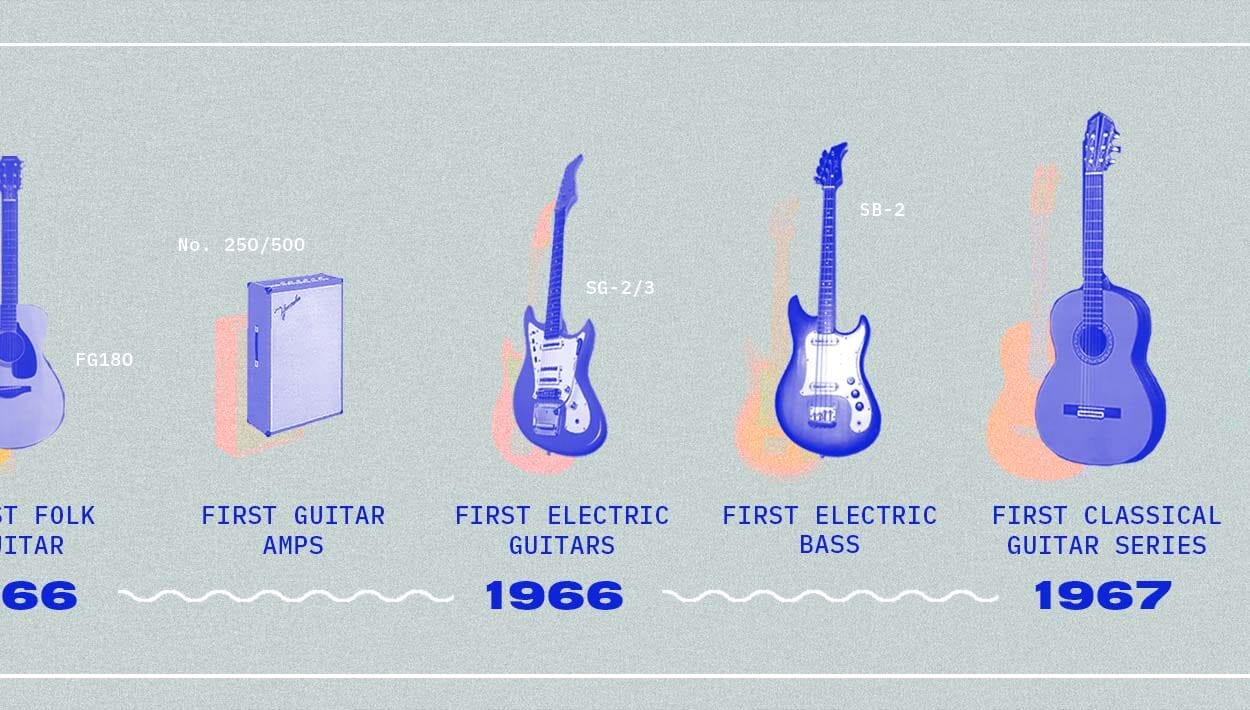


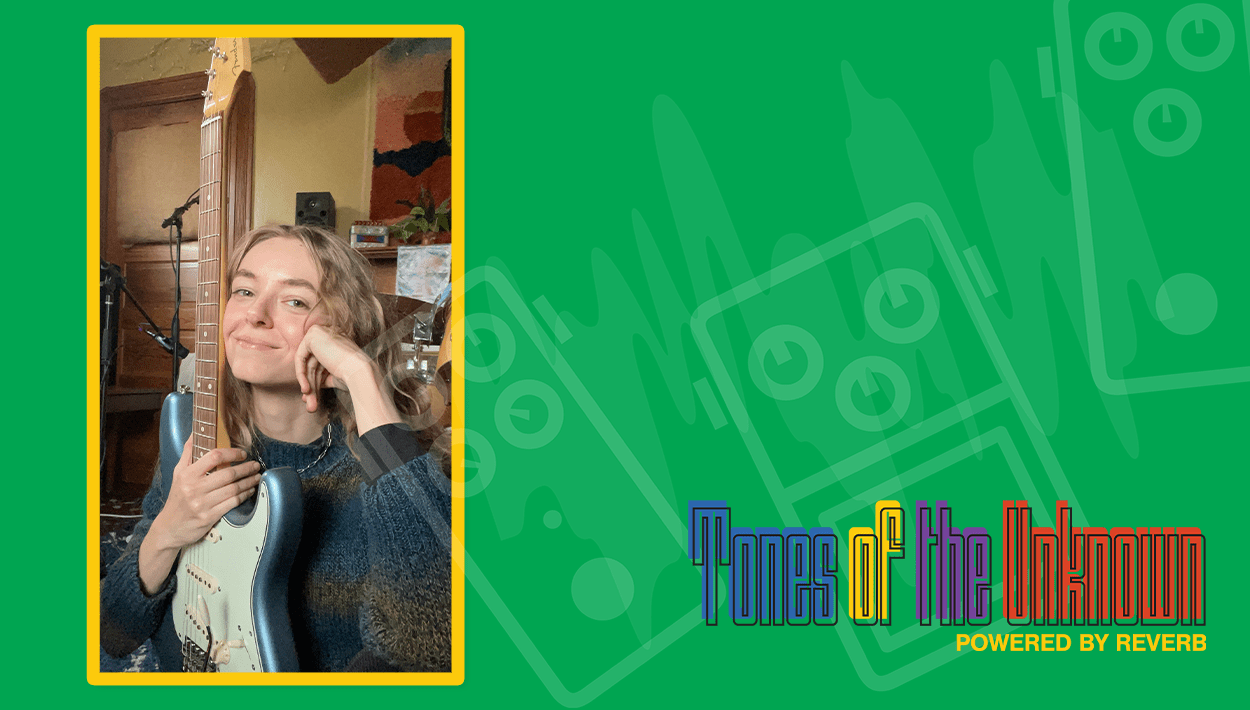
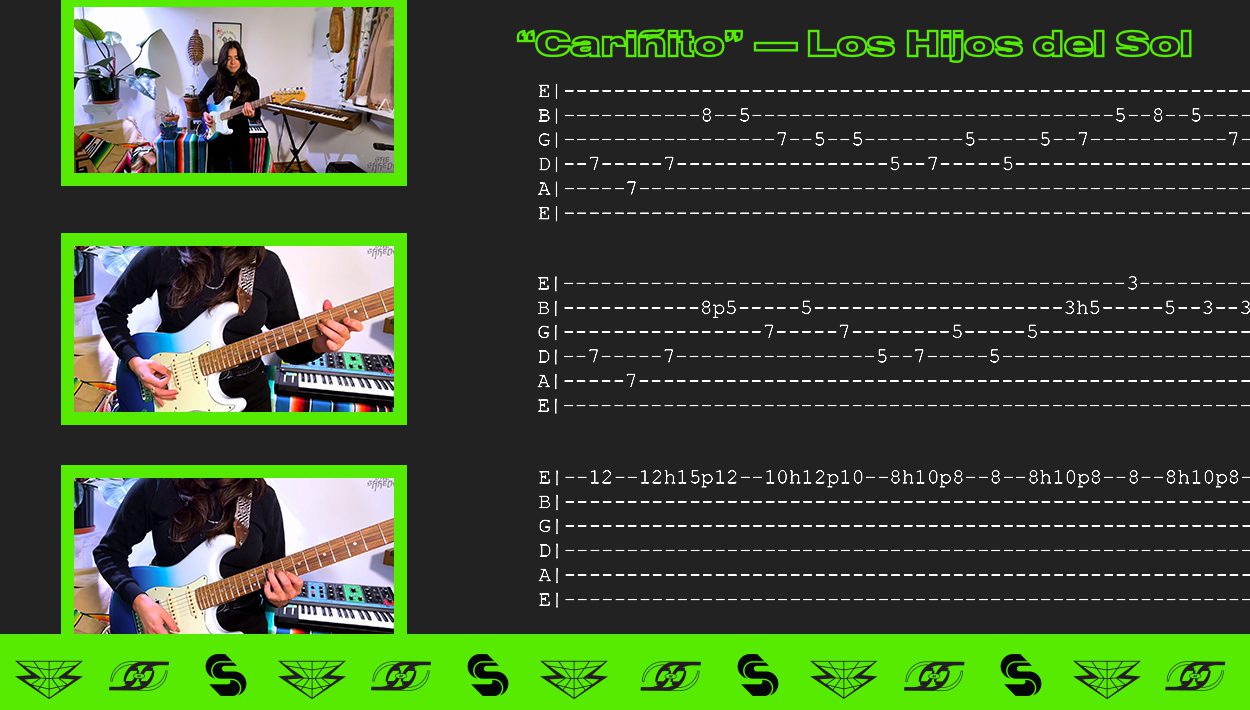



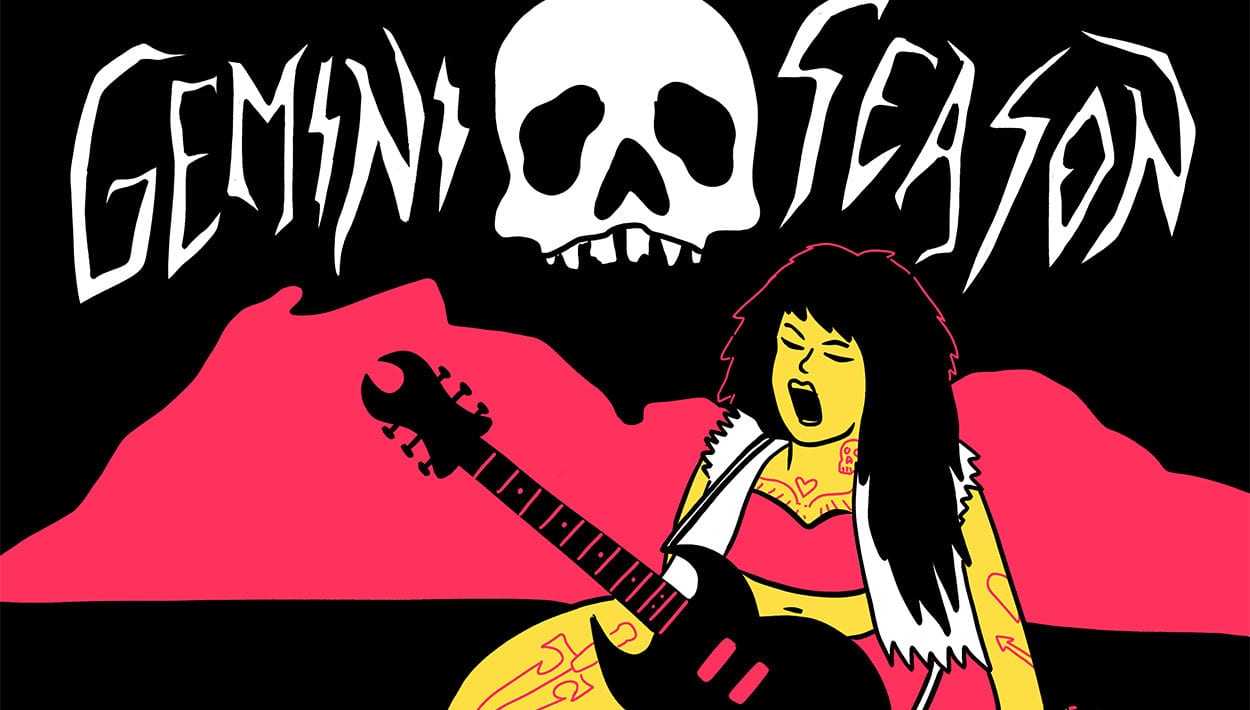





Comments
Which link do we get in touch with yamaha coperation president to negotiate a very important business for Africa.
Comment by Eze C. Akwarandu on January 31, 2020 at 10:19 amThe SG2000 is the most beautiful guitar ever made.
Comment by Jackie Brown on February 1, 2020 at 2:47 am